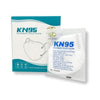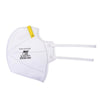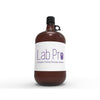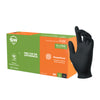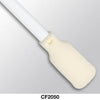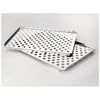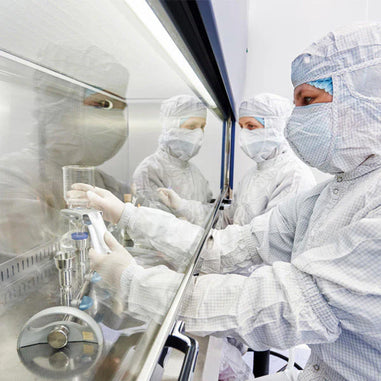- No products in the cart.
Laboratories are dynamic environments where precision, safety, and productivity are paramount. An efficiently designed lab workspace is essential to achieving these goals. Lab furniture plays a pivotal role in ensuring the smooth operation of a laboratory, whether it's for scientific research, diagnostics, or quality control. In this comprehensive guide, we will delve into the fundamental aspects of lab furniture selection and layout, covering ergonomic considerations, storage solutions, and the importance of adaptable furniture.
1. Ergonomic Excellence
Ergonomics is the science of designing workspaces and equipment to maximize efficiency and minimize the risk of strain, injury, and fatigue. In a laboratory setting, where researchers and technicians often spend long hours conducting experiments and analyses, ergonomic lab furniture is crucial. Here are some considerations:
A. Lab Benches and Workstations
- Height-Adjustable Surfaces: Lab benches with adjustable heights accommodate users of various statures and allow for both sitting and standing work positions.
- Ergonomic Seating: Chairs should offer lumbar support, adjustable height, and cushioned seats to promote comfort and good posture.
- Monitor Placement: Ensure monitors are at eye level to prevent neck strain.
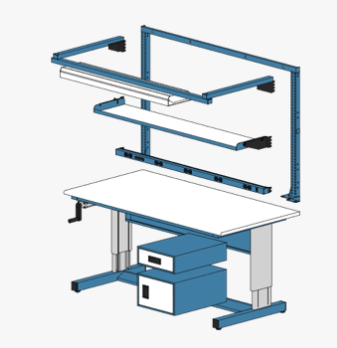
B. Task-Specific Considerations
- Microscope Ergonomics: Microscope users should have comfortable seating and adjustable eyepieces to minimize neck and back strain.
- Pipetting and Fine Manipulations: Design workstations with ample legroom for comfortable pipetting and fine motor tasks.
2. Smart Layout and Flow
A well-thought-out lab layout optimizes workflow, minimizes the risk of contamination, and enhances communication among team members. Consider these aspects when planning your lab's layout:
A. Bench Configuration
- Island Layout: In an island layout, lab benches are placed in the center of the room, providing flexibility and access from all sides. This is ideal for collaborative work.
- Wall Layout: Wall-mounted lab benches along the perimeter maximize floor space but may limit access.
B. Storage Proximity
- Adjacent Storage: Locate storage solutions like cabinets, shelves, and refrigerators close to workstations to reduce the need for excessive movement.
- Safety Cabinet Placement: Ensure safety cabinets for hazardous chemicals are strategically placed to facilitate quick access in emergencies.
C. Containment Zones
- Separate Hazardous Areas: Isolate areas for handling hazardous materials, biological agents, or radioactive substances from general lab spaces.
- Airflow and Ventilation: Implement proper ventilation systems and containment measures to maintain a safe working environment.
3. Adaptable Furniture for Flexibility
Flexibility is key in a modern laboratory, where research requirements may change frequently. Adaptable lab furniture allows you to reconfigure the workspace as needed. Consider these options:
A. Modular Lab Furniture
- Modular Benches: These can be easily customized, expanded, or reconfigured to accommodate different experiments and equipment.
- Mobile Furniture: Mobile lab benches and storage units provide flexibility in lab layout adjustments.
B. Height-Adjustable Solutions
- Adjustable Lab Benches: Height-adjustable lab benches with electronic controls allow users to switch between sitting and standing positions, reducing fatigue and improving focus.
C. Versatile Storage
- Flexible Shelving: Adjustable shelving systems accommodate containers of various sizes, making it easier to organize and access materials.
- Mobile Storage Units: Carts and mobile storage units can be moved around the lab to provide additional work surfaces or storage capacity where needed.
4. Lab Storage Solutions
Efficient storage is a cornerstone of lab organization. In addition to basic shelving and cabinetry, consider the following storage solutions:
A. Chemical Storage Cabinets
- Chemical Segregation: Store chemicals based on compatibility to prevent reactions. Use color-coded labels for quick identification.
- Ventilation: Install cabinets with proper ventilation to minimize the buildup of potentially harmful fumes.
B. Freezers and Refrigerators
- Temperature Control: Use lab-grade refrigerators and freezers with precise temperature control for storing reagents, samples, and sensitive materials.
- Inventory Management: Implement a labeling and tracking system to keep track of stored items and their expiration dates.
C. Sample Storage Solutions
- Cryogenic Storage: Invest in cryogenic storage systems for long-term storage of biological samples.
- Racks and Boxes: Use high-quality racks and boxes for sample organization within refrigerators and freezers.
5. Safety Considerations
Safety should always be a top priority in the laboratory. The design and choice of lab furniture can significantly impact safety. Here are some safety considerations:
A. Chemical Resistance
- Chemical-Resistant Surfaces: Ensure that lab benches and workstations are made of materials that resist damage from common chemicals.
B. Fire Safety
- Fire-Rated Cabinets: Use fire-rated cabinets for the storage of flammable chemicals, ensuring compliance with safety regulations.
C. Emergency Equipment
- Eye Wash and Emergency Shower Stations: Install these stations in accessible locations and ensure they are free from obstruction.
D. Electrical Safety
- Ground Fault Circuit Interrupters (GFCIs): Use GFCIs to protect against electrical hazards in wet lab areas.
Conclusion
Creating an efficient laboratory workspace involves thoughtful planning, careful selection of lab furniture, and attention to ergonomic and safety considerations. An optimized lab layout, adaptable furniture, and smart storage solutions can greatly enhance productivity, ensure the safety of personnel, and contribute to the success of scientific endeavors. Keep in mind that the needs of each laboratory may vary, so it's important to tailor your lab furniture choices to your specific research requirements and objectives. By doing so, you'll create a workspace that not only supports your research but also promotes innovation and scientific discovery.
For over 40 years, Lab Pro Inc. is your steadfast source for premium lab workbenches and furniture, cleanroom lab supplies, hand tools, lab equipment, chemicals, and PPE apparel. Trusted by aerospace industries, medical device companies, and laboratories globally, we epitomize exceptional quality in every product. Experience the convenience of next day service in California. Contact us online or at 888-452-2776 to explore solutions tailor-made for the laboratory industry. Elevate your experiments with Lab Pro Inc. – your partner in precision and excellence.

